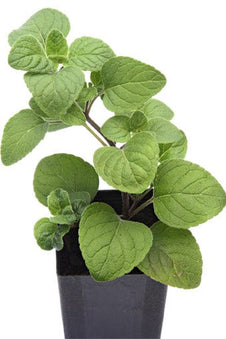
Nepitella
Nepitella

- In stock, ready to ship
- Inventory on the way

Usually available: not sure
Life cycle: Perennial
Height: 30cm
Position: Sun / part shade
Soil preference: Well drained
This is how we pack and send your Herb Plants to all states except TAS & WA
You will receive
- 1 Nepitella Herb Plant in a 50 X 75mm tube - General growing instructions
All of our Herb Plants are grown organically with certified organic potting mixes and fertilizers
Botanical Name: Calamintha nepeta
Nepitella grows into a small mound to about 30cm high, with soft, shiny green oregano like leaves. The leaves release a minty fragrance when brushed softly, although some people say it smells like a cross between mint and oregano. The stems are square and the leaves held in opposite pairs, with both stems and leaves being covered in downy hairs. The delicate flowers are white, pink or lilac but could equally be described as lavender blue and grow on tall stems up to 30cm high.
This perennial, from the mint family, also goes by the name Lesser Calaminth, nepitella and is called mentuccia in Italy. Nepitella grows wild in Italy, especially in Tuscany and Umbria, and may even be found growing amidst cobblestone pathways. Today the plant has spread and may be found growing in Southern Europe to Great Britain.
Nepitella attracts bees and is considered to be an ornamental shrub that does well in garden borders.
Growing Conditions
Nepitella grows best in full sun to partial shade and seems to have tolerance to a wide range of growing conditions and soil types. It is a hardy plant and shows frost tolerance. When water is available Nepitella prefers free draining soils, but it does do well in dry conditions. Each plant should live for 3-4 years, but some climatic zones may suit annual growing instead. The normal growing season is from summer into autumn. Some regions may have winter conditions that encourage dormancy, but the plant should return in spring when the earth begins to warm.
This small perennial does have spreading roots and is easily propagated by division or seed dispersal. After flowering the seeds will fall and ensure a continual supply of the plant in the garden if you allow it to grow. It is not considered to be invasive, but it does well in pots if you have any concerns. Regular trimming may help maintain plant shape and spread. This plant can be subject to powdery mildew on occasion, but is generally considered quite pest resistant.
Medicinal Uses
In medieval times Nepitella was used for stomach problems and as a digestive aid, as a soothing tea and as a treatment for insomnia.
This herb should be avoided by pregnant and breastfeeding women, in medicinal quantities.
Culinary Uses
Nepitella is not widely known, but is becoming more common in the garden and the kitchen, particularly in the United States. In Rome Nepitella is known as Mentuccia, so this name may be used when referring to Italian cuisine. Although the fragrance is said to be a cross between mint and oregano, some chefs have likened it to a mix of mint and basil instead. Others still say it is a mint with oregano and thyme overtones.
Nepitella is considered a vital Tuscan herb and may be used to flavor anything savoury, including roast meats, mushrooms, pizzas, artichokes or even pasta dishes. Many cooks have said they never cook mushrooms without using this herb. However, it should be used sparingly as it may overpower some dishes. The leaves may be used fresh or dried, but dried is considered to be stronger.
All information provided on this website is for informational purposes only. Please seek professional advice before commencing any treatment.





